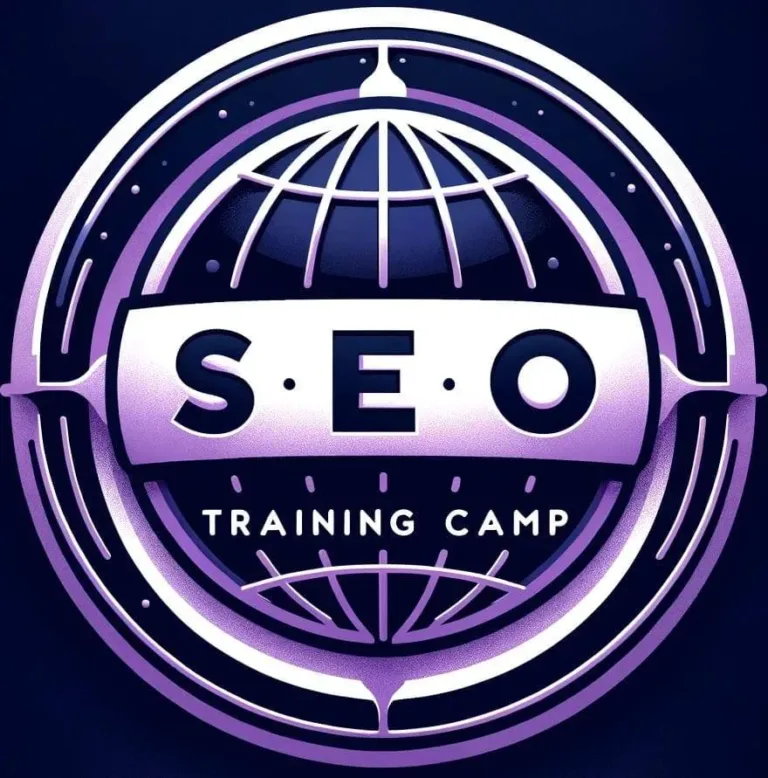Content marketing strategy and SEO work together to drive organic traffic and improve digital visibility. Research shows 95% of digital experiences begin with search engines, while 70% of B2B buyers engage with multiple content pieces before purchasing. Effective implementation requires strategic keyword research, technical optimization, and high-quality content development aligned with user intent. Key components include proper heading hierarchy, mobile responsiveness, structured data markup, and holistic analytics tracking through platforms like Google Analytics and Search Console. Success metrics encompass organic traffic growth, engagement rates, and conversion data. This integrated approach forms the foundation for deeper strategic understanding and tactical implementation.
Learn More
- Strategic keyword research and mapping drives content creation to match user search intent and target audience needs.
- Technical SEO elements like proper title tags, heading structure, and mobile optimization ensure content visibility in search results.
- Content quality depends on authoritative research, compelling headlines, and comprehensive coverage of topics with semantic variations.
- Analytics platforms track organic traffic, engagement rates, and conversion metrics to measure content marketing performance.
- A comprehensive content calendar addresses customer pain points while maintaining consistent publishing standards.
Understanding Content Marketing Fundamentals
Content marketing forms the backbone of modern digital marketing strategies, serving as a strategic approach focused on creating and distributing high-quality content to attract and retain specific audiences.
This methodology prioritizes conveying precious, relevant, and consistent content that drives profitable customer actions while building long-term relationships with target demographics.
The fundamental objectives of content marketing encompass multiple critical elements: establishing brand awareness, cultivating a subscribed audience base, generating qualified leads, nurturing customer loyalty, and ultimately increasing sales and profitability.
Success in content marketing requires sustained consistency, as isolated viral content rarely translates into meaningful long-term engagement or business results. Implementing structured content processes ensures efficient content creation and delivery across all channels. A comprehensive content calendar helps maintain consistent publishing schedules and strategic alignment.
Content marketing integrates seamlessly with various marketing techniques, including account-based marketing, branded content initiatives, and demand generation strategies. Creating and monitoring appropriate key performance indicators helps measure the success of these integrated efforts.
This integration necessitates a clear understanding of business objectives, ranging from brand health and marketing optimization to revenue generation and operational efficiency.
The approach demands precise audience targeting, identifying specific pain points, and creating solutions-oriented content that addresses user needs rather than focusing solely on product promotion.
The effectiveness of content marketing relies on diversification across multiple content types and distribution channels.
Organizations must employ written, audio, visual, and video content formats, strategically distributed across appropriate platforms to maximize reach and engagement.
This holistic approach, when properly executed, supports the entire customer progression while facilitating the acquisition of critical first-party data.
Measurement focuses on meaningful metrics tied directly to business objectives, avoiding superficial vanity metrics that fail to demonstrate genuine business impact.
Essential SEO Components

Search engine optimization's essential components form a complex structure of technical, on-page, and content-related elements that collectively determine a website's visibility and ranking potential in search results.
These components can be categorized into distinct areas: on-page SEO elements, content optimization, technical SEO, and strategic implementation tools.
On-page SEO elements require scrupulous attention to title tags, maintaining lengths between 50-60 characters, and meta descriptions of approximately 160 characters. E-A-T principles guide content quality and authority assessment through expert authorship and trustworthy information. Establishing a consistent publishing schedule ensures regular content updates and helps maintain content freshness.
Proper heading hierarchy implementation (H1-H6) boosts content structure comprehension for search engines, while page speed optimization targets load times under 4 seconds to maintain ranking potential. Site speed impacts user experience and can significantly affect bounce rates.
Content optimization focuses on strategic keyword research aligned with user intent, creating high-quality content that incorporates LSI targeting and related subtopics.
URL structures must remain clean and concise, while image optimization demands proper alt tag implementation.
XML sitemaps submission to Google Search Console facilitates efficient content uncover and indexing.
Technical SEO components emphasize crawlability through organized site hierarchy, all-encompassing mobile responsiveness, and SSL certificate implementation for amplified security.
Structured data markup improves search engine interpretation of environment and meaning.
The strategic implementation requires specific tools and methodologies for success tracking.
Google Search Console and Semrush provide essential data for performance monitoring and keyword research.
Regular content quality assessments, utilizing detailed SEO checklists, and tracking key performance indicators validate consistent optimization efforts.
These measurements focus on organic traffic growth, brand visibility improvement, and backlink profile development.
Content and SEO Integration

The seamless integration of content strategy and SEO practices forms the cornerstone of successful digital marketing campaigns, with 68% of online experiences beginning with search engines. This integration requires a systematic approach encompassing audience identification, content variety, and strategic keyword placement while maintaining high-quality standards. The investment in content and SEO integration typically ranges from $8,000 to $30,000 monthly for comprehensive coverage.
| Content Element | SEO Impact | Integration Method |
|---|---|---|
| Quality Content | Increased Dwell Time | Natural Keyword Integration |
| Topic Clusters | Amplified Authority | Strategic Internal Linking |
| Content Formats | Diverse Search Visibility | Multi-Channel Distribution |
| Regular Updates | Fresh Content Signals | Performance-Based Optimization |
Successful content-SEO integration relies on implementing the hub-and-spoke model, where core topics branch into related subtopics, creating exhaustive coverage and establishing topical authority. This approach, combined with strategic internal linking, strengthens the website's overall SEO structure while providing critical user exploration paths. A comprehensive value proposition drives content development to ensure meaningful audience engagement.
The implementation process requires attention to both technical and creative aspects. Content creators must incorporate targeted keywords naturally while maintaining readability and value. The inverted pyramid structure ensures critical information appears first, satisfying both user intent and search engine crawlers. Maintaining an 8th-grade reading comprehension level helps ensure content accessibility across diverse audience segments. Regular content audits and performance tracking through analytics tools enable data-driven optimization decisions, confirming continued effectiveness of the integrated strategy.
For optimal results, organizations must align their content calendar with SEO objectives, incorporating keyword research findings and audience understanding. This alignment, supported by diverse content formats and promotion across multiple channels, creates a sturdy foundation for sustainable organic growth and improved search visibility.
Strategic Keyword Research

Thorough keyword research forms the foundation of effective content marketing and SEO strategies, with 95% of digital experiences starting on search engines.
Modern keyword research requires a systematic approach utilizing specialized tools and analytical methodologies to identify meaningful search terms and content opportunities. Differentiating between short and long-tail keywords helps target specific audience segments effectively. Examining search intent types ensures optimal content alignment with user needs. Seasonal trends can significantly impact keyword performance and search behavior.
Industry-standard platforms like Google Keyword Planner and SEMrush provide critical data on search volumes, competition levels, and ranking potential. Google Search Console reveals existing query performance, while SE Ranking's tools generate related keywords with holistic metrics.
The integration of competitor analysis through SERP evaluation and website audits enables organizations to identify content gaps and strategic opportunities.
Advanced research techniques utilize multiple data sources to guarantee holistic keyword coverage:
- Search listening methodologies monitor digital conversations across platforms, capturing emerging trends and user intent patterns
- Local keyword targeting boosts geographical relevance and improves regional search visibility
- "Striking distance" optimization focuses resources on keywords ranking just below page one, maximizing ROI potential
- Forum exploration on platforms like Reddit and Quora generates long-tail keyword variations aligned with actual user queries
The implementation of these research strategies must prioritize search intent alignment and content relevance.
By analyzing year-over-year trends through Google Trends and utilizing keyword gap analysis tools, organizations can identify high-potential topics before they reach peak search volume.
This data-driven approach guarantees content development efforts target keywords with optimal combinations of search volume, competition level, and conversion potential.
Creating High-Quality Content

The creation of high-quality content demands a systematic approach that combines thorough research methods, strict editorial standards, and value-driven content development strategies.
Research indicates that content incorporating data-backed perspectives, expert analysis, and actionable solutions generates 94% higher engagement rates compared to purely promotional material.
Implementing compelling headlines with action-oriented language and clear value propositions significantly increases content visibility and audience engagement.
Establishing productivity tools like Grammarly, Canva, and Descript streamlines the content creation process while ensuring consistent quality standards across all deliverables.
Maintaining rigorous editorial guidelines while implementing holistic research protocols, including primary source verification and expert interviews, establishes the foundation for content that consistently delivers measurable value to target audiences.
Organizations that utilize analytics data to measure and refine their content performance are nearly 95% more likely to achieve exceptional success in their content marketing initiatives.
Value-Driven Content Creation
Creating value-driven content stands as a fundamental pillar of successful content marketing, focusing primarily on providing solutions that address specific customer needs and pain points.
This strategic approach requires a comprehensive comprehension of audience goals, challenges, and preferences to develop content that connects and delivers measurable results. Research shows that 70% of B2B buyers engage with multiple content pieces before initiating sales contact. Studies indicate that brand storytelling creates deeper emotional connections, with 89% of consumers more likely to make purchases after following a brand's story. Successful content strategies must include multi-format delivery through blogs, podcasts, and articles to maximize audience reach.
Effective value-driven content implementation requires systematic execution through:
- Strategic alignment with customer expedition stages, ensuring content addresses specific pain points and questions at each phase
- Development of practical resources, including templates, guides, and tools that provide immediate utility to the target audience
- Integration of data-driven perspectives from social media listening and analytics to continuously improve content relevance
- Implementation of evaluation structures to track engagement, conversions, and ROI metrics
The long-term benefits of value-driven content extend beyond immediate engagement, contributing to amplified brand awareness, improved search engine rankings, and sustained customer loyalty.
By focusing on authentic purpose and maintaining consistent quality, organizations can establish authority in their field while building trust with their audience.
This approach conclusively drives sustainable growth through increased organic traffic, higher conversion rates, and stronger customer relationships.
Maintaining Editorial Standards
Maintaining editorial standards serves as the cornerstone of content quality control, establishing systematic processes to guarantee clarity, accuracy, and brand consistency across all published materials.
These standards encompass all-encompassing guidelines for style, tone, voice, and formatting requirements, guaranteeing uniformity across content platforms while reinforcing brand reputation. Clear target audience information guides content creation decisions to ensure messaging resonates effectively.
Implementation requires structured protocols for grammar usage, fact-checking procedures, and reference formatting. Organizations must establish clear editorial workflows, defining specific roles and responsibilities throughout the content creation process. Predictable content production is achieved through comprehensive reference documentation and established performance expectations.
This includes systematic content review procedures and mandatory fact-verification protocols using credible sources.
The impact of well-maintained editorial standards extends beyond mere consistency. Organizations implementing strong guidelines experience improved operational efficiency through reduced editing cycles and clearer communication channels.
Moreover, adherence to editorial standards significantly influences SEO performance, as search engines favor high-quality, consistent content. These standards also incorporate essential accessibility requirements, ensuring content reaches all intended audiences effectively.
Training sessions and regular guideline updates help team members maintain compliance with established standards, while legal and ethical considerations regarding copyright and sourcing protect the organization's integrity and mitigate potential risks.
Content Research Methods
Building upon established editorial standards, effective content research methods form the foundation of high-performing digital content strategies.
Successful content creation relies heavily on systematic keyword research, competitor analysis, and a holistic understanding of search intent. By utilizing specialized tools and analyzing search patterns, content creators can identify pivotal opportunities within their target market.
An all-encompassing content research methodology encompasses multiple critical components:
- Strategic keyword analysis focusing on both high-volume primary terms and specific long-tail variations, while maintaining alignment with business objectives and target audience needs
- Thorough competitive analysis to identify content gaps, establish topic clusters, and develop internal linking strategies that amplify search visibility
- Search intent optimization through SERP analysis, semantic keyword integration, and customized content development that matches user expectations
- Implementation of on-page SEO elements including structured headings, natural keyword placement, and strategic use of multimedia content
This data-driven approach guarantees content not only meets current search engine requirements but also delivers substantial worth to users.
Website Structure and Navigation

Effective website structure and wayfinding serve as critical foundations for successful content marketing and SEO performance.
Research indicates that well-organized site blueprint, including clear hierarchical wayfinding limited to 3-4 levels and strategic menu placement, directly impacts user engagement and search engine crawlability.
Implementation of essential navigation elements, such as consistent primary menus with 5-7 items, breadcrumbs, and prominent search functionality, enables users to efficiently locate and access content while supporting improved search engine indexing.
Navigation Best Practices
A website's wayfinding system serves as its structural blueprint, directly impacting user experience, search engine optimization, and conversion rates.
Implementing navigation best practices requires adherence to fundamental design principles while maintaining a user-centric approach. Critical elements include consistent navigation patterns, clear visual hierarchies, and intuitive menu structures limited to 5-7 top-level items.
Effective navigation blueprint incorporates both flat structures for quick access and strategic use of breadcrumbs for orientation.
Visual design elements, including contrasting colors and adequate spacing, improve navigability while reducing cognitive load. For larger sites, incorporating a search function becomes essential for efficient content exploration.
Key navigation implementation strategies:
- Apply analytics data to streamline menu structures based on actual user behavior patterns
- Implement responsive designs that maintain functionality across all device types
- Create clear visual indicators for current location and hierarchy levels
- Apply object-based or action-based navigation depending on site objectives
Regular monitoring of user interactions through analytics tools enables continuous improvement of navigation structures.
This data-driven approach, combined with systematic card sorting exercises, guarantees navigation systems remain aligned with user expectations and business goals.
Site Architecture Elements
Proper site design forms the foundation of successful content marketing and user experience strategies. The blueprint must align with both user needs and search engine requirements, utilizing one of several structural approaches: hierarchical, sequential, matrix, database, or flat structures, each serving different content organization purposes.
| Element | Purpose |
|---|---|
| Homepage | Central hub directing users to key sections |
| Categories | Logical content grouping and wayfinding |
| Breadcrumbs | User location tracking and path clarity |
| Internal Links | Cross-page connections and crawlability |
| XML Sitemap | Search engine roadmap for indexing |
| URL Structure | Clear content hierarchy indicators |
Effective site architecture directly impacts technical SEO performance through improved crawlability, indexing efficiency, and user wayfinding patterns. Key components include strategically placed internal links, clear hierarchical relationships between pages, and properly implemented breadcrumb navigation. Regular monitoring of site structure metrics, such as click depth and orphaned pages, verifies optimal performance and identifies areas for improvement. Implementation should focus on maintaining a balance between search engine requirements and user experience, while considering factors like content scalability and future growth potential.
User Experience Optimization

Successful user experience optimization combines technical performance, design accessibility, and content quality to create a seamless digital expedition for visitors.
By prioritizing site speed optimization through image compression, minimal script usage, and CDN implementation, organizations can maintain load times under three seconds, significantly reducing bounce rates and improving user retention.
Responsive design principles confirm consistent functionality across all devices, while accessibility features like proper alt text and CSS rendering accommodate diverse user needs.
This technical foundation, coupled with strategic content development, creates an environment where users can efficiently traverse and engage with site materials.
The integration of clear, persuasive content utilizing plain language and active voice guides users through their expedition while maintaining SEO effectiveness.
Monitoring engagement metrics provides critical understanding into content performance and user behavior patterns, enabling data-driven optimization decisions.
Key elements for optimizing user experience include:
- Technical Performance Metrics
- First load time under 3 seconds
- Optimized image compression
- Minimal script overhead
- CDN implementation
- Mobile Responsiveness
- Device-adaptive layouts
- Simplified traversal
- Reduced scrolling requirements
- Cross-device testing protocols
- Content Optimization
- Keyword-integrated storytelling
- Clear, active voice writing
- Strategic visual elements
- Engagement metric tracking
- Strategic Implementation
- UX-first approach
- SEO-UX balance
- Regular performance analysis
- Cross-team collaboration
This holistic approach to user experience optimization confirms sustained engagement while maintaining search engine visibility, creating a balanced digital presence that serves both user needs and business objectives.
Performance Tracking Methods

Performance tracking methodology forms the backbone of effective SEO strategy, requiring systematic measurement across multiple key metrics and data points.
Essential metrics include organic traffic volume, keyword position rankings, click-through rates (CTR), backlink quality and quantity, and user engagement indicators such as bounce rate.
Implementation requires an all-encompassing toolkit of analytics platforms. Google Analytics serves as the primary instrument for monitoring organic traffic patterns and user behavior, while Google Search Console provides critical observations into search performance and keyword rankings.
Advanced platforms like SEMrush and Ahrefs offer deeper analytical capabilities, particularly in competitive analysis and backlink monitoring. Screaming Frog facilitates technical SEO audits, identifying structural issues that may impact search rankings.
The tracking process demands systematic configuration across these platforms. Initial setup involves establishing Google Analytics tracking parameters for organic traffic measurement, configuring Search Console for keyword monitoring, and implementing position tracking through specialized tools like SEMrush.
Content inventories must be maintained through platforms like Clearscope, while backlink profiles require regular monitoring through dedicated tools.
Regular performance tracking yields substantial benefits for SEO strategy optimization. Data-driven observations enable perfected content strategies, prompt identification of technical issues, and informed decision-making based on empirical evidence.
Competitive analysis through specialized tools reveals market gaps and keyword opportunities, while consistent monitoring helps elevate quick response to ranking fluctuations. This systematic approach to performance tracking establishes a foundation for continuous SEO improvement and market visibility advancement.
Content Distribution Channels

Content distribution models represent a strategic cornerstone of modern marketing, encompassing owned, earned, and paid channels to maximize content visibility and reach.
Each channel serves distinct purposes within the content marketing ecosystem, working synergistically to amplify brand messaging and drive engagement across multiple touchpoints.
Owned channels form the foundation of distribution strategy, providing direct control over content presentation and messaging.
These platforms, including company websites, blogs, and email newsletters, enable brands to maintain consistent communication while gathering essential audience perceptions.
Earned distribution channels exploit organic promotion through third-party validation, creating credibility through mentions, shares, and backlinks from industry publications and influencers.
Paid channels complete the distribution blueprint by offering guaranteed visibility through strategic investments in targeted advertising and sponsored content.
- Owned channels deliver an average ROI of 13.5x compared to paid channels, making them pivotal for long-term content strategy success
- Earned media generates 3x more leads than paid advertising while costing 62% less
- Paid distribution enables precise audience targeting, with conversion rates increasing by up to 25% when properly refined
- Cross-channel distribution strategies result in 23% higher engagement rates compared to single-channel approaches
Effective content distribution requires a balanced approach across all three channels, with each component supporting the others.
Organizations must continuously monitor performance metrics across channels, adjusting their distribution mix based on audience response and engagement patterns.
This data-driven approach confirms optimal resource allocation and maximizes content reach while maintaining cost efficiency.
Building Long-Term Success

Building a sustainable foundation for long-term success in content marketing requires a strategic fusion of SEO best practices, evergreen content creation, and data-driven optimization.
This foundation demands precise planning, strategic resource allocation, and a profound comprehension of target audiences to achieve optimal results in search rankings and user engagement.
The development of evergreen content serves as a cornerstone for sustained success. By creating holistic how-to guides, product reviews, and resource lists that maintain relevance over time, organizations establish lasting value in their content portfolio.
This approach drives consistent organic traffic and strengthens domain authority through persistent user engagement and natural link building.
Technical SEO implementation plays pivotal role in maintaining competitive advantages. Key factors include optimizing page speed, making certain mobile responsiveness, and developing resilient internal linking structures.
Creating content hubs with interrelated pieces amplifies site blueprint and improves search engine crawlability, leading to better rankings across all content assets.
The long-term ROI of content marketing manifests through compounding returns. As the content library expands, each piece contributes to the overall site authority, creating a multiplicative effect on search rankings and referral traffic.
Regular monitoring and strategic adjustments certify sustained performance improvements. This systematic approach, combined with high-quality backlinks and continuous content updates, generates an ascending progression in search visibility and user engagement metrics.
The focus on quality over quantity, supported by thorough keyword research and strategic placement, establishes a foundation for enduring market presence and authority.
Frequently Asked Questions
How Much Should Businesses Invest in Content Marketing Versus SEO Activities?
Businesses should allocate 60-70% to content marketing ($5,000-$20,000 monthly) and 30-40% to SEO ($3,000-$10,000 monthly), adjusting based on industry competition, market positioning, and specific growth objectives.
Can Ai-Generated Content Effectively Support Both Content Marketing and SEO Goals?
AI-generated content can support marketing and SEO objectives when combined with human oversight. Data indicates optimal results occur through hybrid approaches, leveraging AI's efficiency while maintaining quality through expert editorial review and customization.
What Role Do Backlinks Play in Combining Content Marketing and SEO?
Backlinks serve as quality indicators, amplifying content visibility and domain authority. They validate content value through third-party endorsements, driving referral traffic while strengthening SEO metrics through established link equity transfer mechanisms.
How Often Should Existing Content Be Updated to Maintain SEO Rankings?
Optimal content update frequency varies by type: high-competition keywords require updates every 197-320 days, while general content should be refreshed every 3-6 months. Performance metrics and ranking trends should guide specific update schedules.
Should Different Content Strategies Be Used for Local Versus Global SEO?
Yes, local SEO requires geographically targeted content with specific location-based keywords, while global SEO demands broader, culturally-adaptable content across multiple regions, languages, and search preferences to maximize international reach and effectiveness.
Conclusion
SUMMATION:
Effective integration of content marketing and SEO remains critical for digital success. Data-driven strategies, incorporating keyword research, quality content creation, and user experience optimization, directly correlate with improved search rankings and engagement metrics. Regular performance tracking through analytics enables continuous enhancement of content distribution strategies. Organizations implementing holistic content-SEO approaches consistently demonstrate superior market visibility, audience retention, and conversion rates in the digital ecosystem.

